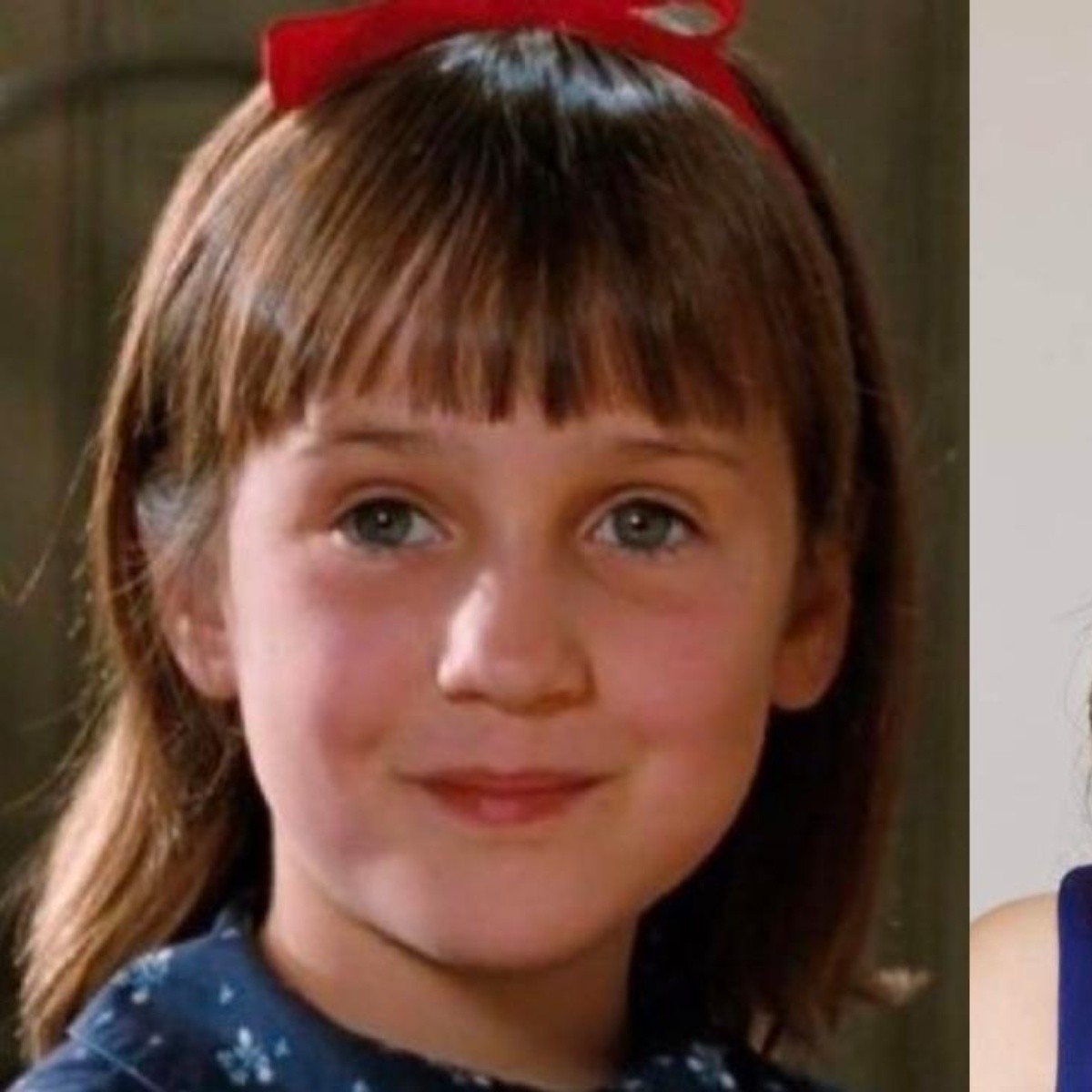The world first fell in love with Mara Wilson in the early 1990s. As a child actor, she charmed audiences with her roles in beloved family films like Miracle on 34th Street and Mrs. Doubtfire. Mara’s talent and adorable personality made her an instant favorite, and she seemed destined for a long career in Hollywood.

Mara, who turned 37 on July 24, appeared to have a bright future ahead of her in the entertainment industry. However, as she grew older, she began to lose what some considered her “cute” appeal, and as a result, her career in Hollywood began to fade. Reflecting on her experiences, Mara shared, “If you’re not cute anymore, if you’re not beautiful, then you are worthless. Hollywood was burned out on me.”
Mara first captivated audiences as the youngest child of Robin Williams’ character in Mrs. Doubtfire (1993). At just five years old, she managed to win over millions of hearts with her portrayal of the adorable Natalie Hillard. Her talent was evident from a young age—before Mrs. Doubtfire, she had already appeared in several commercials, which had put her on Hollywood’s radar.
Despite her early success, Mara’s parents made an effort to keep her grounded. “My parents were proud of me, but they still grounded me,” Mara recalls. She shared that her mother always told her, “You’re just an actor; you’re just a kid,” whenever she started feeling too full of herself.
Following her big break in Mrs. Doubtfire, Mara was cast as Susan Walker in the 1994 remake of Miracle on 34th Street. This role was significant as she took on the character originally portrayed by Natalie Wood in the 1947 version of the film. During her audition, Mara impressed the production team by reading her lines and admitting she didn’t believe in Santa Claus, although she did believe in the tooth fairy, whom she had named after Sally Field, her co-star in Mrs. Doubtfire.
In 1996, Mara took on what would become one of her most iconic roles—Matilda Wormwood in Matilda. She starred alongside Danny DeVito and Rhea Perlman, who played her neglectful parents. Mara’s portrayal of the clever, magical girl endeared her to audiences everywhere.
But 1996 was also a year of deep sorrow for Mara. Her mother, Suzie, passed away from breast cancer that same year. Reflecting on this profound loss, Mara said, “I wasn’t really sure of my identity. I felt like two different people before and after that.” She described her mother as an ever-present force in her life, and her passing left Mara feeling overwhelmed. “I just wanted to be a typical child, especially after my mom died,” she added.
As Mara’s fame grew, so did the pressures that came with it. She was exhausted, and despite her success, she found herself feeling deeply unhappy. She described this time as being “the most unhappy” she had ever been, despite being in the limelight.
At age 11, Mara reluctantly accepted what would be her last major role—Lily Stone in Thomas and the Magic Railroad (2000). Even at that young age, she felt disconnected from the material, saying, “The characters felt too childish, and at 11, I was already reacting to the writing in a more mature way.”
Mara’s decision to leave Hollywood wasn’t solely due to her feelings about the roles she was being offered. As she hit puberty, she began to outgrow the “cute” child star persona that had defined her early career. As a young teen, she was no longer seen as Hollywood’s adorable little girl. She described herself during this time as “just another weird, nerdy, loud girl with bad hair and teeth, whose bra strap was always showing.” At 13, Mara noticed that no one complimented her looks anymore or called her “cute”—at least not in a positive way.
The demands of fame and the harsh realities of growing up under the spotlight took a toll on Mara. She spoke about how her changing appearance impacted her mental health, noting, “I had this Hollywood notion that if you’re not attractive or cute anymore, you’re worthless. I linked that directly to the end of my career.” Even though she was tired of Hollywood, the rejection still hurt. “Hollywood was burned out on me,” she admitted.
After stepping away from acting, Mara found a new passion—writing. She published her first book in 2016, titled Where Am I Now?: True Stories of Girlhood and Accidental Fame. The book details her journey from the peak of child stardom to a quieter, more private life. It covers everything from her experiences on film sets to discovering, as a teenager, that she was no longer “cute” enough for Hollywood.
In addition to her memoir, Mara also wrote Good Girls Don’t, which explores her struggles with meeting societal expectations as a young actress. In her Guardian column, she wrote, “Being cute just made me miserable. I always expected to give up acting—it just happened sooner than I thought.”
Mara Wilson’s story is a powerful reminder of the challenges faced by child stars, especially in an industry that often values appearance over talent. Despite the challenges she faced, Mara has found fulfillment outside of Hollywood, and she remains a beloved figure for many who grew up watching her films.
How do you feel about Mara Wilson’s story? Share this article so others can comment and let us know what they think!





